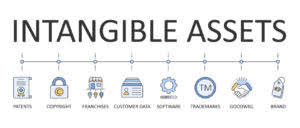Breakeven Point: Definition, Examples, and How To Calculate
Ngày 20/07/2021 lúc 20:36

Break-even analysis can also be instrumental in determining pricing strategies. By understanding how the selling price affects the break-even point, businesses can find the optimal price that maximizes profit while keeping the break-even volume achievable. Similarly, it can also help assess the impact of potential discounts or price increases. Break-even analysis involves the interplay of various components, primarily fixed costs, variable costs, and the contribution margin. Understanding these elements is essential to conducting a break-even analysis.

Objectives of Ratio Analysis and Limitations
By integrating break-even analysis into their financial planning process, organisations can create a more resilient financial strategy that accommodates potential market fluctuations. One of the most common mistakes businesses make is misidentifying fixed and variable costs. Fixed costs are expenses that do not change with production levels, while variable costs vary. HOA Accounting Failure to accurately identify fixed and variable costs can result in incorrect calculations of the breakeven point, leading to financial decisions that can harm the business.
Company
However, a product or service’s comparably low price may create the perception that the product or service is not as valuable as other products. However, after establishing market dominance, a business may begin to raise prices when weak competitors can no longer undermine its higher-pricing efforts. Being a cost leader and selling at the break-even price requires a business to have the financial resources to sustain periods of zero earnings. With sales matching costs, the related transaction is said to break even, sustaining no losses and earning no profits in the process. The break-even price is the point break even definition at which investment return equals the total cost of your investment. Estimating business operations and making strategic decisions, including such expenses, when estimating your break-even point.
- Consider enrolling in our Business Financial Planning & Control course to enhance your financial acumen further.
- The breakeven point and the payback period are financial concepts commonly used in business.
- If a business doesn’t meet this level, it often becomes difficult to continue operation.
- Let’s break down these two other components, so you know how to calculate the break-even point.
- Here are a couple of real-world examples of break-even points for different types of businesses.
- Fixed costs are expenses that remain the same, regardless of how many sales you make.
Discover more from Accounting Professor.org

When assessing break-even analysis, ensure that you explain why it balance sheet has an important internal planning role – but don’t forget that it has a significant external role too. The company didn’t lose any money during the period, but it also didn’t gain any money either. Businesses and individuals impacted by recent disasters in Texas may be eligible for SBA assistance. This can be achieved by improving lead generation and qualification processes, improving the sales process, or offering incentives for quick purchases. Take your learning and productivity to the next level with our Premium Templates.
Example 3: Retail Business
During slow seasons, the breakeven point may be higher, as the business needs to sell more units to cover its expenses. Break-even analysis is often a component of sensitivity analysis and scenario analysis performed in financial modeling. Using Goal Seek in Excel, an analyst can backsolve how many units need to be sold, at what price, and at what cost to break even. There’s a lot to managing accounts and making strategic decisions for any company.

Understanding financial risks in an unpredictable market environment is crucial for business sustainability. Break-even analysis allows businesses to evaluate how fluctuations in costs or sales volumes affect profitability. Organisations can implement proactive measures to mitigate potential losses and maintain stability by assessing financial risks through break-even analysis. Effective pricing strategies are vital for maintaining competitiveness while ensuring profitability. Break-even analysis helps businesses establish minimum pricing based on costs, guiding decisions on price adjustments, discounts, or promotional offers. By understanding how price changes impact the break-even point, businesses can make strategic pricing decisions that align with market conditions and consumer expectations.

- Fixed costs, like rent and salaries, stay constant, whereas variable costs fluctuate based on production levels.
- Automating processes can reduce errors, speed up production, and streamline workflow.
- The key components of break-even analysis are fixed costs, variable costs, unit contribution margin, and break-even point, which represents the sales volume needed to cover all costs.
- Break-even analysis is often presented in a simplified format, which may lead to misinterpretation by stakeholders.
- A low breakeven point can make it easier for businesses to access funding from investors or lenders.
- Alternatively, you can calculate the break-even point in sales dollars by dividing the total fixed costs by the contribution margin ratio.
This method helps entrepreneurs, managers, and investors determine the minimum sales required to cover costs, providing a clear picture of financial health. This blog post delves into the intricacies of break-even analysis, its components, calculations, and applications, offering valuable insights for anyone looking to make informed financial decisions. Let’s say the fixed costs are \($10,000\), the selling price per unit is \( $50\), and the variable cost per unit is \($30\). However, it is essential to note that simply reducing the breakeven point is not always the best business strategy. While reducing costs and increasing sales volume can help improve financial performance, balancing this with a focus on maximizing profits is essential. Businesses must consider factors such as pricing strategies, competition, and market demand to make informed decisions about balancing the breakeven point with profitability.
One of the ways technology and automation can impact the breakeven point is by reducing labor costs. Labor costs are significant for businesses, and automating certain processes can significantly reduce labor costs. A low breakeven point can improve risk management, as businesses can better withstand unexpected events such as economic downturns, natural disasters, or supply chain disruptions. With a low breakeven point, companies can maintain profitability even during challenging times.

